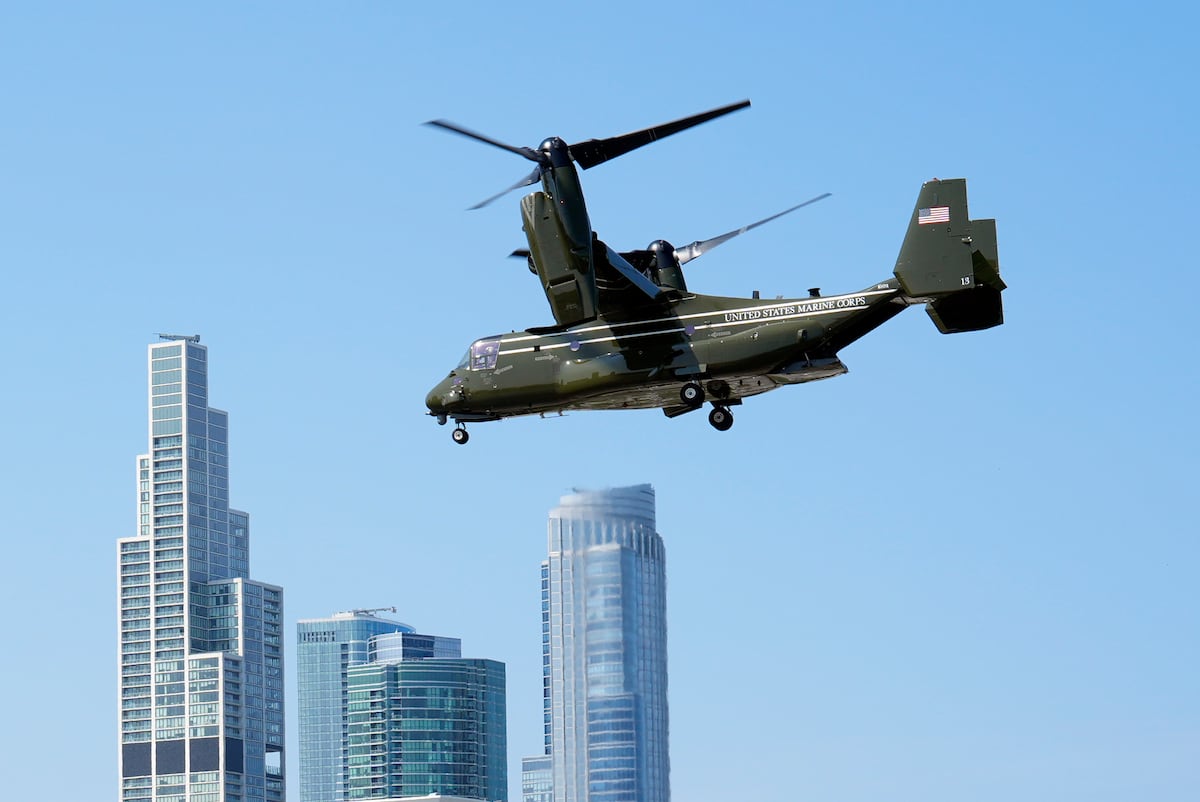
Lawmakers press Pentagon to re-ground Ospreys over safety issues
Posted on 11/26/2024

Three lawmakers are asking Defense Secretary Lloyd Austin to consider re-grounding the military’s fleet of V-22 Ospreys until solutions can be put in place to address safety and design issues identified by The Associated Press in its recent in-depth investigation of the aircraft’s accident record.
In a letter sent to the Pentagon on Monday, Sens. Elizabeth Warren and Ed Markey and Rep. Richard Neal, all Democrats from Massachusetts, wrote to Austin that “given the current concerns about the safety of the V-22, the aircraft should be grounded, and should not be deployed again until the platform’s significant deficiencies are fully addressed.”
The Osprey, which flies like both a helicopter and an airplane, has been in more than 21 major accidents, many of which can be tied back to choices made in its design, the AP found.
The whole fleet was grounded for three months this year following a deadly crash in Japan in November 2023 that killed eight service members, including one from Massachusetts.
Ospreys, which are operated by the Navy, Air Force and Marine Corps and used in the presidential fleet, have now returned to flight operations, with some restrictions.
Osprey pilots have told the AP they do not want to see the aircraft grounded, despite safety concerns, because of its unique capabilities. Program officials have said they are working on fixes to improve the V-22s safety and reliability.
The Pentagon did not immediately respond to a request for comment on the letter.
The lawmakers also cited the AP’s reporting that pilots are having to push the V-22′s “interim power” feature to be able to land safely — but are advised against it because it can wear down parts. Interim power was a factor in the most recent accident in October when a Japan Self-Defense Forces Osprey violently tilted and struck the ground on takeoff. An investigation determined the pilots were to blame for not turning on the interim power during takeoff.
“The reality for pilots is that they have to push the aircraft to its limits to stay safe,” the lawmakers wrote.
In a letter sent to the Pentagon on Monday, Sens. Elizabeth Warren and Ed Markey and Rep. Richard Neal, all Democrats from Massachusetts, wrote to Austin that “given the current concerns about the safety of the V-22, the aircraft should be grounded, and should not be deployed again until the platform’s significant deficiencies are fully addressed.”
The Osprey, which flies like both a helicopter and an airplane, has been in more than 21 major accidents, many of which can be tied back to choices made in its design, the AP found.
The whole fleet was grounded for three months this year following a deadly crash in Japan in November 2023 that killed eight service members, including one from Massachusetts.
Ospreys, which are operated by the Navy, Air Force and Marine Corps and used in the presidential fleet, have now returned to flight operations, with some restrictions.
Osprey pilots have told the AP they do not want to see the aircraft grounded, despite safety concerns, because of its unique capabilities. Program officials have said they are working on fixes to improve the V-22s safety and reliability.
The Pentagon did not immediately respond to a request for comment on the letter.
The lawmakers also cited the AP’s reporting that pilots are having to push the V-22′s “interim power” feature to be able to land safely — but are advised against it because it can wear down parts. Interim power was a factor in the most recent accident in October when a Japan Self-Defense Forces Osprey violently tilted and struck the ground on takeoff. An investigation determined the pilots were to blame for not turning on the interim power during takeoff.
“The reality for pilots is that they have to push the aircraft to its limits to stay safe,” the lawmakers wrote.
Comments( 0 )
0 0 949
0 0 388
0 0 989
0 0 825




















